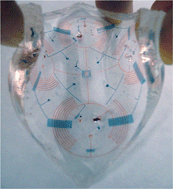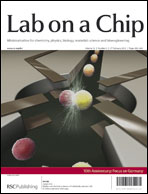The development of a method for high-throughput, automated proteomic screening could impact areas ranging from fundamental molecular interactions to the discovery of novel disease markers and therapeutic targets. Surface display techniques allow for efficient handling of large molecular libraries in small volumes. In particular, phage display has emerged as a powerful technology for selecting peptides and proteins with enhanced, target-specific binding affinities. Yet, the process becomes cumbersome and time-consuming when multiple targets are involved. Here we demonstrate for the first time a microfluidic chip capable of identifying high affinity phage-displayed peptides for multiple targets in just a single round and without the need for bacterial infection. The chip is shown to be able to yield well-established control consensus sequences while simultaneously identifying new sequences for clinically important targets. Indeed, the confined parameters of the device allow not only for highly controlled assay conditions but also introduce a significant time-reduction to the phage display process. We anticipate that this easily-fabricated, disposable device has the potential to impact areas ranging from fundamental studies of protein, peptide, and molecular interactions, to applications such as fully automated proteomic screening.

You have access to this article
 Please wait while we load your content...
Something went wrong. Try again?
Please wait while we load your content...
Something went wrong. Try again?


 Please wait while we load your content...
Please wait while we load your content...